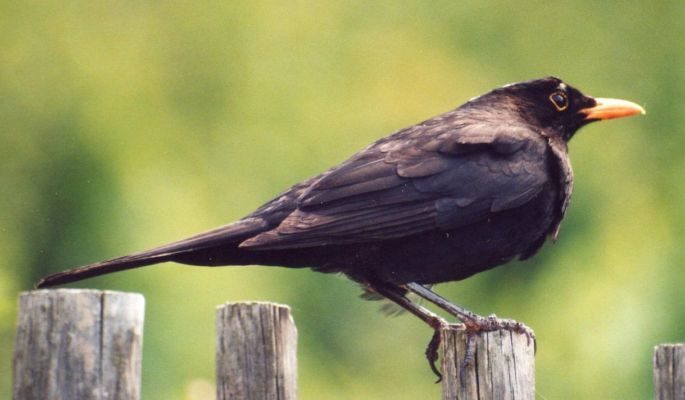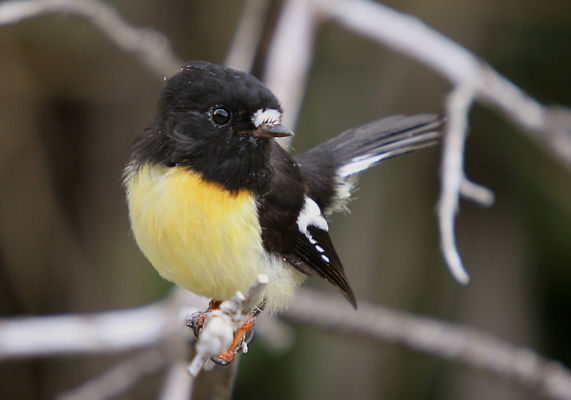If you find a dead bird in an area after a toxin operation it’s an easy leap to say “the poison did it”. But was the dead bird poisoned? The only way to know is to test for toxin levels – and that’s exactly what Landcare Research (Lincoln) scientists Grant Morriss, Graham Nugent and Jackie Whitford did – for a number of 1080 operations, over an 11 year period from 2003-2014.

They went looking for dead birds and they tested any birds they found for 1080 residues in muscle tissue.
The results make interesting and informative reading.
Firstly, it is important to acknowledge that, as these researchers point out, historically there was “substantial mortality of some native bird species in pre-1980 control operations.” Those deaths, in operations over 35 years ago, have led to an ongoing perception that 1080 poison drops are still killing substantial numbers of native birds – but a lot has changed in 35 years.

Changes were made to baiting practice to mitigate most of the risk. These included improvements in the consistency in bait size, the use of dye to make baits less attractive to birds and progressive reductions in 1080 sowing rates.
More recently, further changes have been made in the way bait is sown in aerial operations, this time for reasons of economy. Less bait is sown in some operations, but it is sown in clusters for example. The amount of 1080 used is “typically 125–333 baits per ha for broadcast sowing versus 42–83 baits per ha for strip/cluster sowing”. Do clusters of bait increase the risk of non-target by-kill?
“Contemporary modifications to aerial baiting procedures – including sowing bait in strips or clusters, using prefeed, or adding deer repellent – may have renewed the risk to birds. Here we report observations on the number of dead birds found and on the relative abundance of certain bird species after 15 aerial baiting operations between 2003 and 2014.”
“We found in total 81 bird carcasses, of which 84% were introduced species (mostly blackbirds (Turdus merula)) and 16% were native species, comprising eight kererū (Hemiphaga novaeseelandiae), two tomtits (Petroica macrocephala) and one each of tūī (Prosthemadera novaeseelandiae), fantail (Rhipidura fuliginosa) and silvereye (Zosterops lateralis). Non-native birds comprised 55 blackbirds (Turdus merula), eight chaffinches (Fringilla coelebs), three dunnocks (Prunella modularis) and two thrushes (Turdus philomelos).
“Overall, significantly more bird carcasses were found per field day of searching effort after standard broadcast 1080 sowing than alternative bait distribution methods (strip- or cluster-sowing).”
Did the dead birds die from 1080 poisoning or other causes?
“Residues of 1080 were detected in 18% (2/11) of the native birds analysed (both tomtits), compared to 94% (33/35) of the introduced birds tested. Blackbirds comprised 80% of the introduced dead birds found, 96% of which (25/26) contained 1080 residue.”
Thus blackbirds are vulnerable to 1080, as are native tomtits – possibly because of ground-feeding behaviour. This is backed up by additional research.
“Furthermore, in two detailed studies conducted in the Hauhungaroa Ranges in 2011 and 2013, blackbirds represented 3.2% and 1.9% of the overall live bird counts but 54% and 73% respectively of the dead birds found.”
What of the other deaths not attributed to 1080 poisoning?
“Two of the kererū found in 2011 bore obvious signs of predation (by stoats) and the fantail was found freshly dead after a heavy snowfall.”
Recent innovations such as the use of deer repellent and cluster sowing were not found to be detrimental.
“Our results suggest that modern 1080 baiting operations pose only a negligible threat to native forest bird communities and a small threat to individuals, especially relative to the threats they face from the introduced mammals targeted in pest-control operations… Our finding that most of the native dead birds found did not contain 1080 residue highlights the need by observers to avoid automatically attributing native bird deaths following aerial pest control operations to 1080 poisoning. To the contrary, the evidence here of very few native bird deaths directly attributable to 1080 underscores the suitability of this compound for mammalian pest control in New Zealand’s forests.”
“By contrast to our conclusions on native bird species, our results suggest that aerial poison operations probably have a detrimental effect on blackbirds and possibly also some other common introduced bird species such as chaffinches, thrushes and dunnocks.”
The full research article is published in the NZ Journal of Ecology and is freely available.
Dead birds found after aerial poisoning operations targeting small mammal pests in New Zealand 2003–14 (2016)

